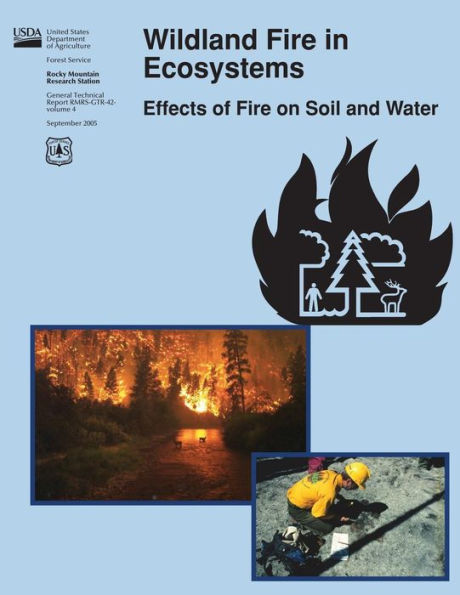Fire is a natural disturbance that occurs in most terrestrial ecosystems. It is also a tool that has been used by humans to manage a wide range of natural ecosystems worldwide. As such, it can produce a spectrum of effects on soils, water, riparian biota, and wetland components of ecosystems. Fire scientists, land managers, and fire suppression personnel need to evaluate fire effects on these components, and balance the overall benefits and costs associated with the use of fire in ecosystem management. This publication has been written to provide up-to- date information on fire effects on ecosystem resources that can be used as a basis for planning and implementing fire management activities. It is a companion publication to the recently published book, Fire's Effects on Ecosystems by DeBano and others (1998). In the late 1970s, the USDA Forest Service published a series of state-of-knowledge papers about fire effects on vegetation, soils, water, wildlife, and other ecosystem resources. These papers, collectively called "The Rainbow Series" because of their covers, were widely used by forest fire personnel. This publication updates both the Tiedemann and others (1979) paper on fire's effects on water and the Wells and others (1979) paper on soils. This publication is divided into three major parts (A, B, C) and an introductory chapter that provides discussions of fire regimes, fire severity and intensity, and fire related disturbances. Part A describes the nature of the soil resource, its importance, characteristics and the responses of soils to fire and the relationship of these features to ecosystem functioning and sustainability. Part A is divided into three main chapters (2, 3, and 4) that describe specific fire effects on the physical, chemical, and biological properties of the soil, respectively. Likewise, Part B discusses the basic hydrologic processes that are affected by fire, including the hydrologic cycle, water quality, and aquatic biology. It also contains three chapters which specifically discuss the effect of fire on the hydrologic cycle, water quality, and aquatic biology in chapters 5, 6, and 7, respectively. Part C has five chapters that cover a wide range of related topics. Chapter 8 analyzes the effects of fire on the hydrology and nutrient cycling of wetland ecosystems along with management concerns. The use of models to describe heat transfer throughout the ecosystem and erosional response models to fire are discussed in chapter 9. Chapter 10 deals with important aspects of watershed rehabilitation and implementation of the Federal Burned Area Emergency Rehabilitation (BAER) program. Chapter 11 directs the fire specialists and managers to important information sources including data bases, Web sites, textbooks, journals, and other sources of fire effects information. A summary of the important highlights of the book are provided in chapter 12. Last, a glossary of fire terms is included in the appendix. The material provided in each chapter has been prepared by individuals having specific expertise in a particular subject. This publication has been written as an information source text for personnel involved in fire suppression and management, planners, decisionmakers, land managers, public relations personnel, and technicians who routinely and occasionally are involved in fire suppression and using fire as a tool in ecosystem management. Because of widespread international interest in the previous and current "Rainbow Series" publications, the International System of Units (Systeme International d'Unites, SI), informally called the metric system (centimeters, cubic meters, grams), is used along with English units throughout the volume. In some instances one or the other units are used exclusively where conversions would be awkward or space does not allow presentation of both units.



